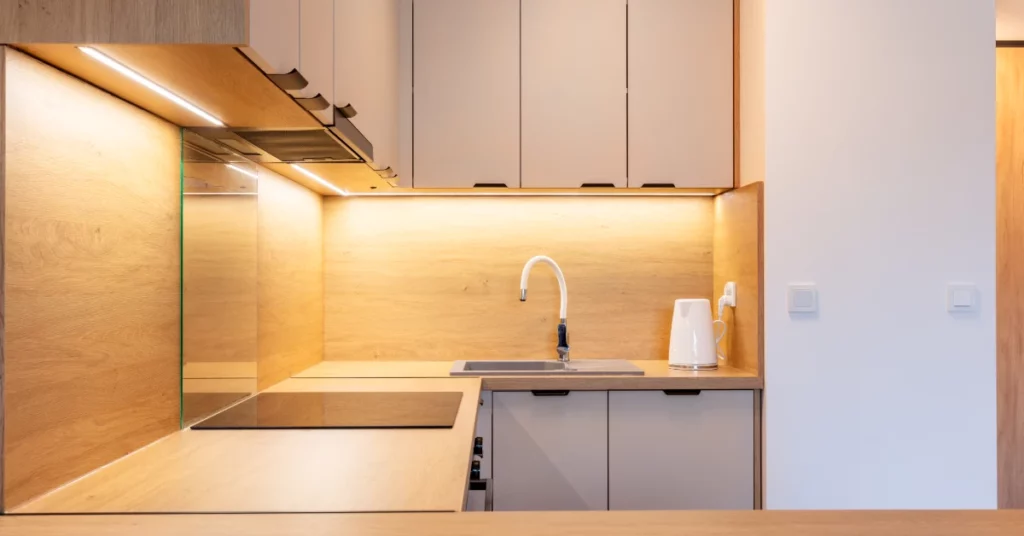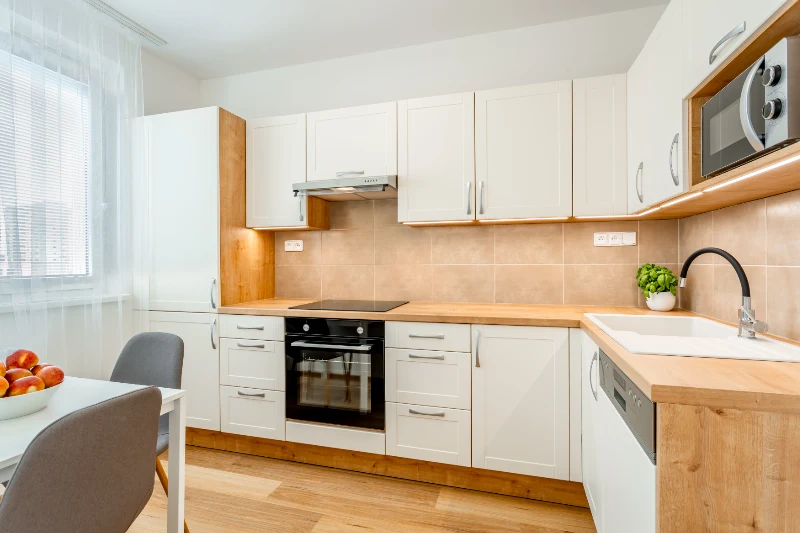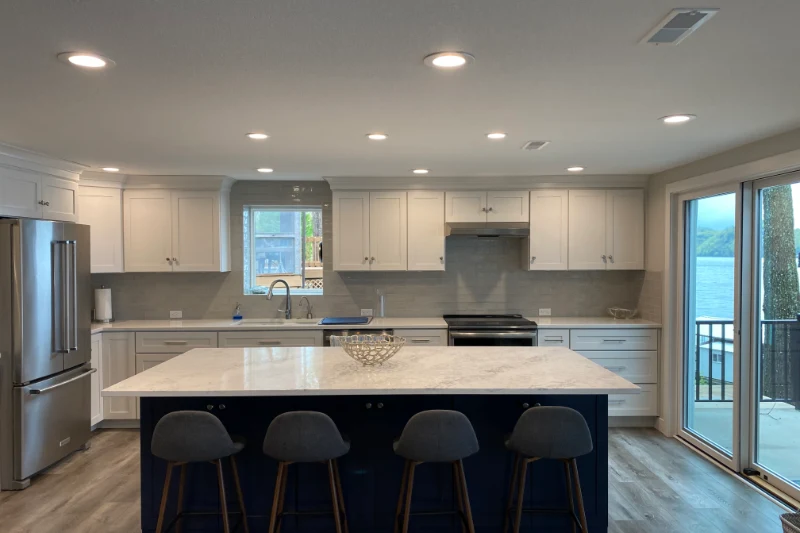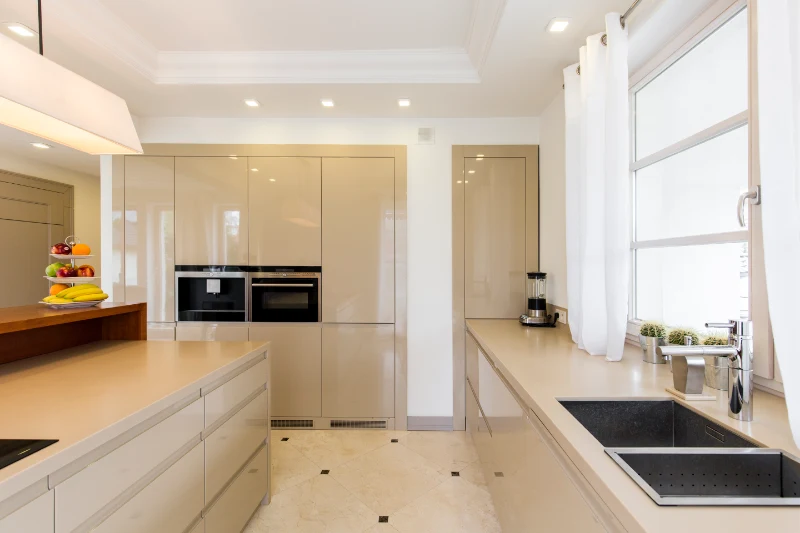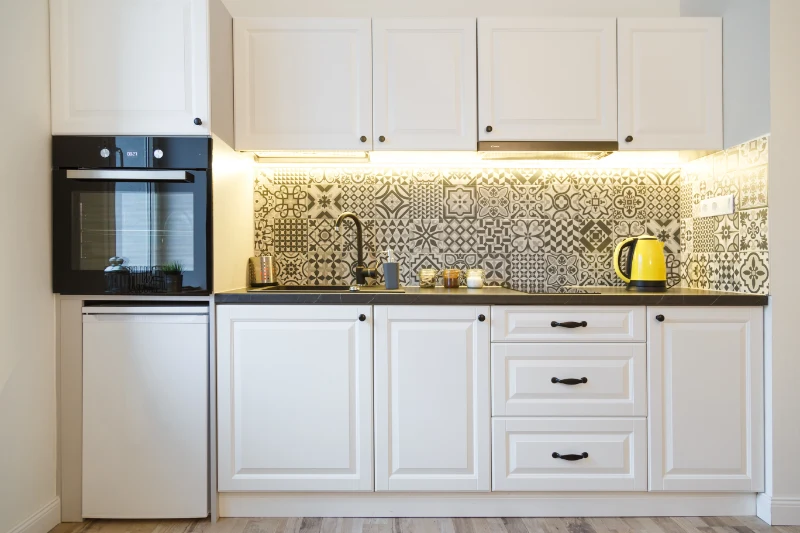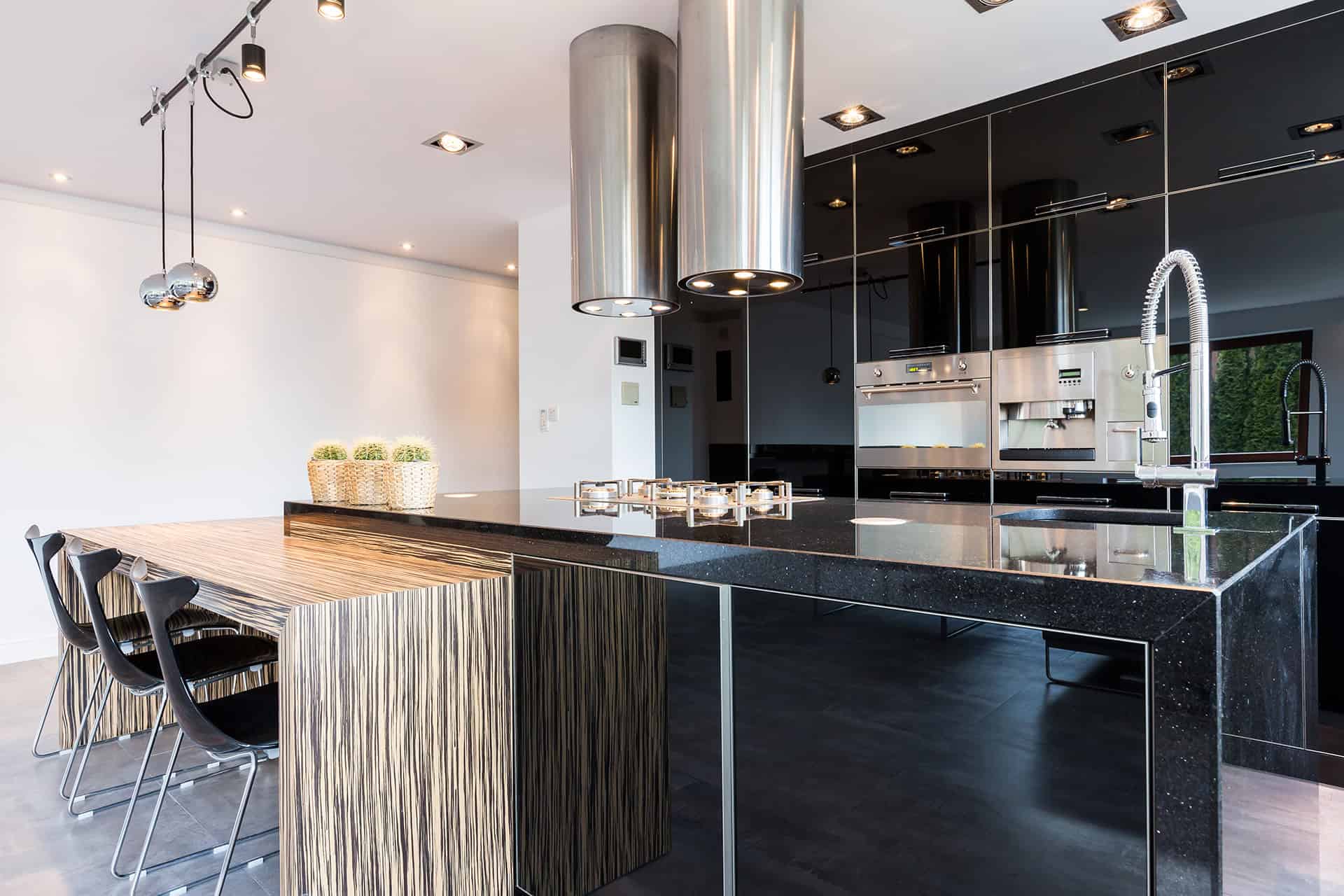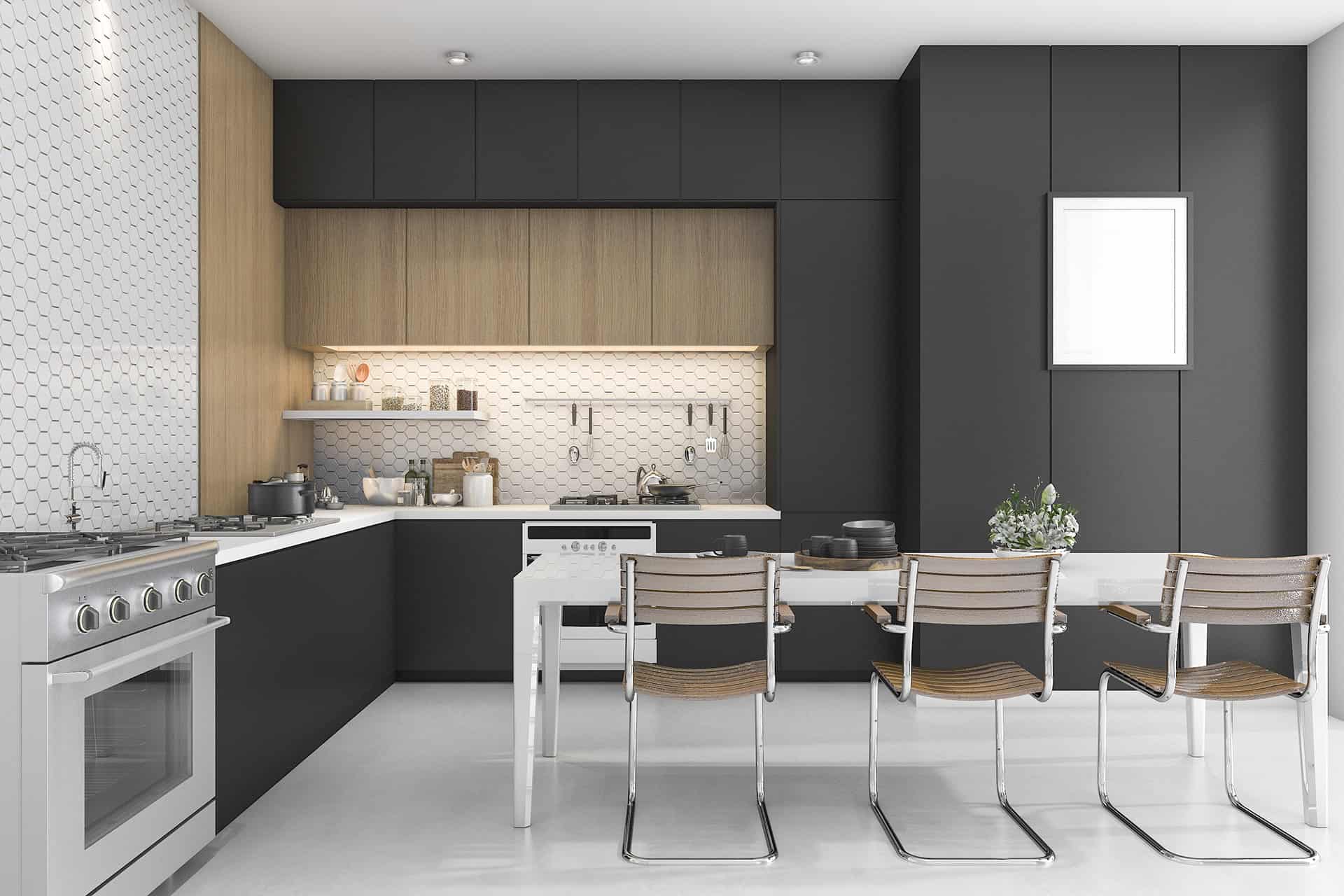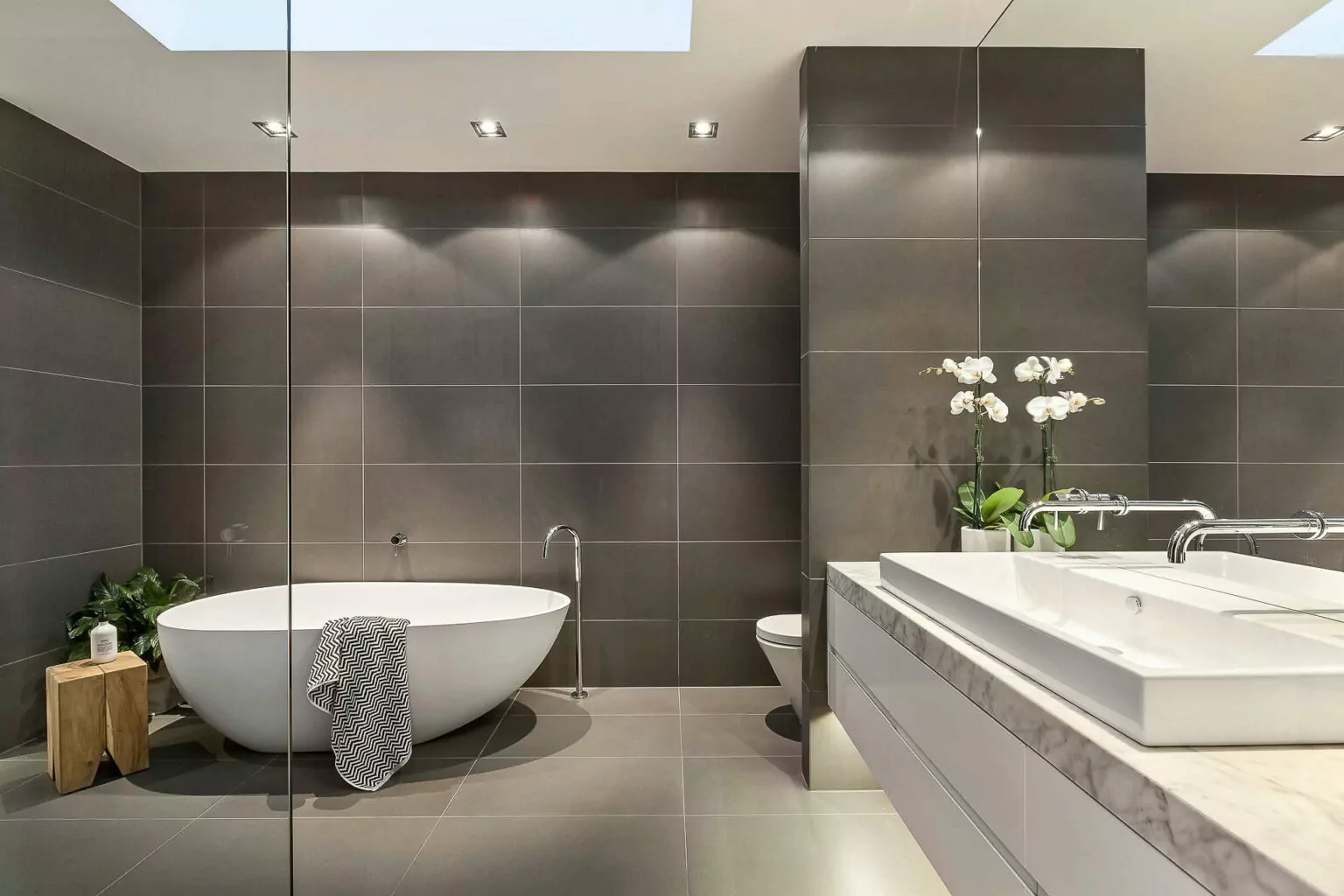Arranging the kitchen light scheme in 2024 involves a blend of functionality, aesthetics, and smart technology to create an efficient and inviting space.
What aspects to consider while mapping kitchen lights layout?
The first step of lighting placement in kitchens is to layer the illumination, combining three major lighting types, ambient, accent, and task, to address various needs.
- Ambient lighting is responsible for overall illumination; it is usually achieved with ceiling-mounted fixtures, such as recessed lights or LED panels, which offer energy efficiency and a clean, modern look. Install the lights strategically to cover the entire kitchen and ensure even light distribution and no shadows.
- Task lighting is also known as kitchen worktop lights; it is essential for work zones like countertops, the sink, and the stove. LED strips and puck lights are ideal for illuminating these spaces – they provide focused light without creating glare. For kitchen islands, pendant lights are both functional and decorative – they add a stylish focal point while offering direct lighting for meal preparation and dining. In 2024, consider using smart pendants with adjustable color temperatures and dimming options to customize the light according to the time of day and activity.
- Accent lighting brings in depth and highlights to the kitchen. Use LED strips above cabinets to create a soft glow that emphasizes design features or highlights decorative elements. Additionally, toe-kick lighting, placed beneath lower cabinets, provides a subtle and contemporary look while improving nighttime visibility.
Smart lighting systems are becoming increasingly popular in 2024, allowing homeowners to control and automate their kitchen lighting through voice commands or mobile apps. Integrating smart bulbs and fixtures can enhance convenience and energy efficiency. For example, setting up lighting scenes for different tasks, such as cooking, dining, or entertaining, can be easily achieved with a few taps on a smartphone or through voice assistants like Alexa or Google Assistant.
Lastly, consider the color temperature of the lights. Warmer tones (2700K to 3000K) create a cozy atmosphere, suitable for dining areas, while cooler tones (3500K to 5000K) are better for task lighting as they mimic natural daylight and help with visibility and concentration. Combining these elements thoughtfully will ensure that your kitchen lighting is functional and stylish, adapting seamlessly to the varied activities that take place in this central hub of the home.
How to arrange recessed lighting for a kitchen?
Arranging recessed lighting in a kitchen requires strategic planning to achieve optimal illumination and functionality. Start by identifying the main work areas, such as the countertops, stove, sink, and island. You’d better install recessed lights directly above the work zones to ensure adequate lighting.
Space the lights evenly, typically 4 to 6 feet apart, to avoid shadows and dark spots.
Consider using adjustable or gimbal recessed lights to direct light where it’s most needed. Additionally, complement the spotlights with ambient lighting by placing recessed lights around the kitchen’s perimeter.
Dimmers can be installed to allow flexibility in lighting levels, creating a versatile and inviting environment.
Properly arranged recessed lighting not only enhances the kitchen’s usability but also contributes to interior aesthetics.
What type of kitchen lighting is optimal for a kitchen island?
The right lighting for an island involves balancing both style and functionality. Pendant lights are a popular choice due to their versatility and ability to deliver focused lighting while also serving as decorative elements.
When opting for pendants, keep in mind the island’s size and shape; typically, two to three pendants evenly spaced will provide ample illumination without overwhelming the space. Alternatively, linear suspension lights offer a sleek, modern look and are ideal for longer islands.
Ensure that all fixtures are positioned to avoid casting shadows on the work surface. Additionally, incorporating dimmable features allows for adjustable lighting levels, perfect for transitioning from meal prep to dining or fun activities.
Combining task lighting with ambient lighting fixtures, for instance, recessed or under-cabinet spotlights and LED strips, can further enhance the island’s functionality and create a cohesive, well-lit space.
If you have any questions about home renovations, do not hesitate to contact Groysman Construction, a remodel company based in San Diego. Look through our extensive portfolio of completed projects and request your free quote today!

